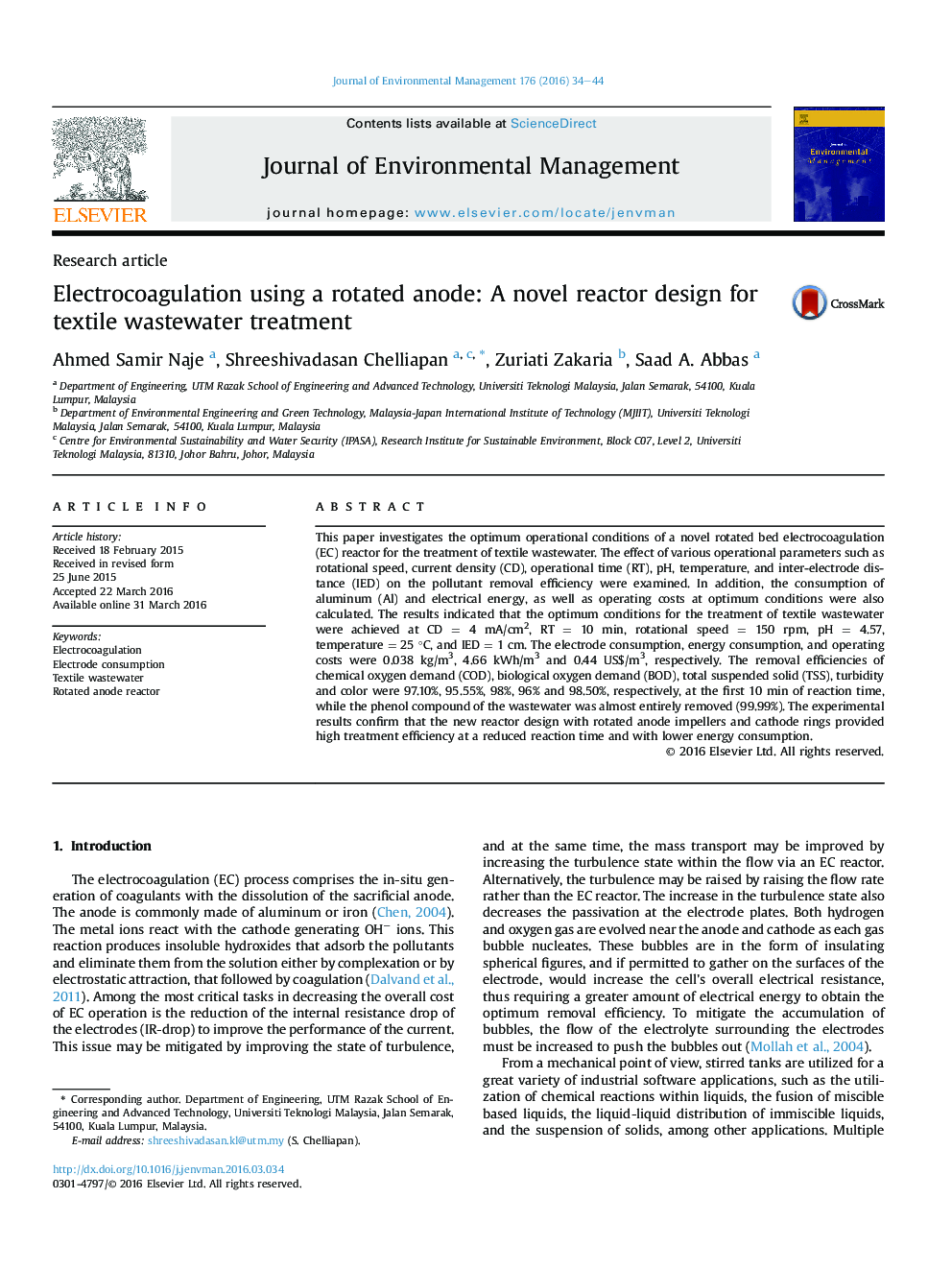| Article ID | Journal | Published Year | Pages | File Type |
|---|---|---|---|---|
| 1055325 | Journal of Environmental Management | 2016 | 11 Pages |
•A novel rotated bed electrocoagulation (EC) reactor was developed for the treatment of textile wastewater.•The electrode consumption, energy consumption and operating costs of the novel reactor were found to below.•The removal efficiencies of textile wastewater contaminants were high during the initial 10 min of reaction time.•Up to 99.99% of phenol was removed in the reactor system.
This paper investigates the optimum operational conditions of a novel rotated bed electrocoagulation (EC) reactor for the treatment of textile wastewater. The effect of various operational parameters such as rotational speed, current density (CD), operational time (RT), pH, temperature, and inter-electrode distance (IED) on the pollutant removal efficiency were examined. In addition, the consumption of aluminum (Al) and electrical energy, as well as operating costs at optimum conditions were also calculated. The results indicated that the optimum conditions for the treatment of textile wastewater were achieved at CD = 4 mA/cm2, RT = 10 min, rotational speed = 150 rpm, pH = 4.57, temperature = 25 °C, and IED = 1 cm. The electrode consumption, energy consumption, and operating costs were 0.038 kg/m3, 4.66 kWh/m3 and 0.44 US$/m3, respectively. The removal efficiencies of chemical oxygen demand (COD), biological oxygen demand (BOD), total suspended solid (TSS), turbidity and color were 97.10%, 95.55%, 98%, 96% and 98.50%, respectively, at the first 10 min of reaction time, while the phenol compound of the wastewater was almost entirely removed (99.99%). The experimental results confirm that the new reactor design with rotated anode impellers and cathode rings provided high treatment efficiency at a reduced reaction time and with lower energy consumption.
Graphical abstractA novel Rotated Electrocoagulation Reactor.Figure optionsDownload full-size imageDownload as PowerPoint slide
